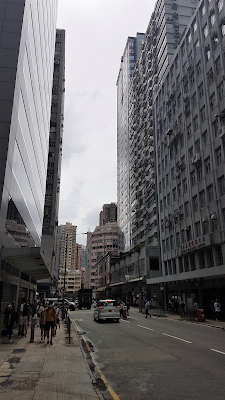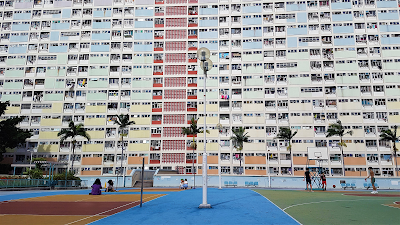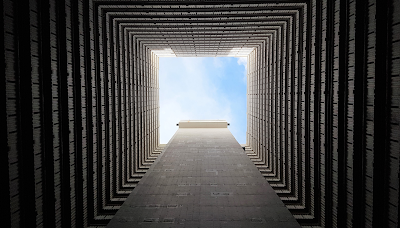There is a fairy in the depths of the squatter squatter: Wong Tai Sin San Po Kong Rainbow Travels
When I came to the Wong Tai Sin Temple excitedly, I found that the Taoist temple was temporarily closed due to the epidemic, and the internal buildings were being repaired, but there were still many good believers outside. Compared with other local gods such as Tin Hau and Che Kung, Wong Tai Sin does not have much local origin. He was originally a native of Zhejiang, but he "goes down to the world" in Guangzhou through a helper. According to legend, he was able to quell the plague, and the belief in Wong Tai Sin began to spread in Guangdong. In the early years of the Republic of China, the host of the Taoist temple took refuge in Hong Kong and settled at the foot of the Lion Rock. At that time, it was a large area of wooden houses, and the sanitary conditions were poor, so Wong Tai Sin, who was able to deal with the plague, became widely worshipped. At a time when the world is in trouble again, I wonder if Huang Daxian can show his mighty spirit again and make the plague subside as soon as possible?

Go east from Wong Tai Sin Temple and follow Fung Tak Road to Diamond Hill. Diamond Hill originally had a quarry, so it was called "Diamond Hill"; but after Xi Feicheng, everyone said that there were diamonds here, and even the English name was changed to Diamond Hill. Diamond Hill used to be very lively, not only filled with large and small wooden houses, but also the location of many studios. However, with the demolition of the squatter house and the transfer of the studio, the quaint and quiet Chi Lin Nunnery has now been replaced. I carefully looked at the brief introduction of the monastery and found that they decided to strictly follow the architectural style of the Tang Dynasty because they had read books about ancient Chinese architecture by the famous architect Liang Sicheng and knew that the local Chinese ancient buildings were increasingly scattered due to years of war and destruction. Rebuilding the main temple complex with technology, the mental ambition in it is touching.
From Diamond Hill to the southwest, passing through the former Tai Hom Village is San Po Kong. San Po Kong is bounded by Jue Luk Street, and the north is a traditional industrial area. It is surrounded by tall, wide and gray factory buildings. The street names are very interesting. According to the number, it extends from Tai Yau Street, Shuangxi Street, Sanzhu Street to Palta. The south side of Jue Lu Street is a living area composed of tenement buildings and small shops, similar to the old districts such as Kowloon City and To Kwa Wan. Although San Po Kong is inconspicuous now, it can be said to be the lifeblood of the city in the post-war era when Hong Kong was dominated by light industry. Moreover, since a large number of workers gathered in San Po Kong, it was particularly easy for the mainland to penetrate. Finally, a labor dispute in a plastic flower factory triggered a protest by the workers. The police fired the first shot at Tai Yau Street in San Po Kong, and then there were six or seven The riots, the Hong Kong government's review of local policies, and the transformation of Hong Kong into an international metropolis dominated by real estate finance and other changes. Up to now, due to the relatively inconvenient traffic in San Po Kong, it still retains the appearance of the original industrial zone, and some famous Hong Kong brands such as Hong A Plastic continue to set up factories here. However, with the relocation of most factories, the low-rent industrial buildings have attracted many small shops and workshops upstairs, making it a good place for young people to hunt for treasures.

The last stop of the day was Choi Hung Village and Ping Shek Village in the east of San Po Kong. Choi Hung Village is now a hotspot for tourists, famous for its facade painted in rainbow colors; but it turned out that Choi Hung Village was once awarded the Hong Kong Institute of Architecture's annual award for its unique design. At that time, the Society especially appreciated the ingenuity of architects, creating a sense of space through methods such as building height and building spacing, so that 15,000 people lived within the range of 15 golf courses without being too narrow. The current hotspot for check-in is actually the court on the roof of the parking lot; I sat on the bench of the court, watching the boy playing basketball, and the girl standing in front of the building posing for pictures, and I felt the space that the architect wanted to bring out Feeling and vitality, can not help but feel great.

Compared with the long-shaped building design of Choi Hung Village, Ping Shek Village has two unique single-tower public housing. The characteristic of the single-tower building is that the corridor of the building faces the patio, and all residents can see each other. People who like single-tower buildings will find it convenient for the residents to take care of each other, but when I stood at the bottom of the patio, looking at the floating clouds in the grid above my head, and the dark corridors around me, I felt quite depressing, like sitting in a well and watching the sky. Same. And each occupant can see the opposite side, which reminds me of the circular prison designed by the British philosopher Bentham for the convenience of management, allowing prisoners to monitor each other. I wonder if this building survives thousands of years later, what will future generations who have no memory of Hong Kong evaluate it?

(The Eighteenth District Travel Notes 2)
Like my work? Don't forget to support and clap, let me know that you are with me on the road of creation. Keep this enthusiasm together!
